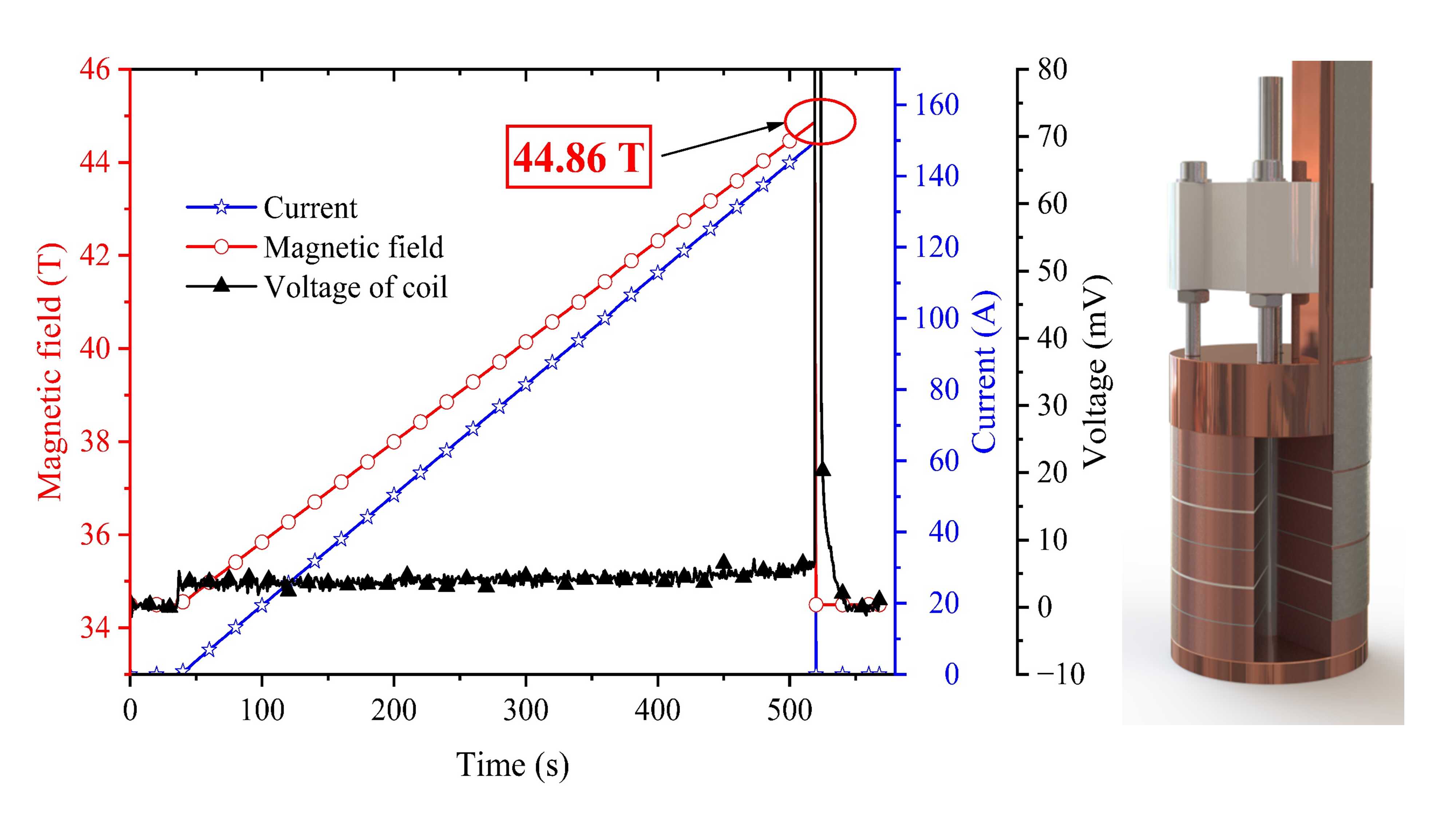
Recently, a research team led by KUANG Guangli and JIANG Donghui from the High Magnetic Field Laboratory of the Hefei Institutes of Physical Science, Chinese Academy of Sciences (CHMFL), successfully developed a “pocket-type” high-temperature superconducting (HTS) coil. The coil, wound with domestically produced REBa₂Cu₃O₇₋ₓ (REBCO) tapes, generated 28.20 T at zero field in a liquid helium bath and produced an additional 10.36 T inside the 34.5 T steady-state magnetic field of the WM5 water-cooled magnet. Together, the system achieved a record combined magnetic field of 44.86 T.
Steady high magnetic fields are critical for cutting-edge research in materials science, physics, and biology, enabling scientists to observe new phenomena and explore new laws of matter. REBCO high-temperature superconducting material has become one of the optimal choices for developing devices that generate higher magnetic fields, owing to its high current-carrying capacity and favorable mechanical properties.
In this research, the team adopted a no-insulation (NI) winding technique for the coil, and carried out a systematic optimized design addressing the electromagnetic, stress, and thermal challenges encountered during the high-field operation of the insert high-temperature superconducting (HTS) coil. They introduced a laser dynamic tracking method during coil winding to ensure structural integrity and flatness. By adjusting the thickness of the tin layer and optimizing soldering temperature and pressure, they developed an inner joint with a resistance as low as 65 nΩ·cm² at 77 K, which significantly reduced heat loss. Aluminum nitride was used as the insulating material to improve heat dissipation, and a flexible electrode connection method was applied to enhance stability under high fields.
This breakthrough lays a solid technical foundation for the development of even higher-field magnets in the future.

Test result of the HTS Coil under high field and its design schematic. (Image by JIANG Shili)